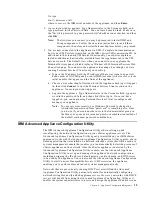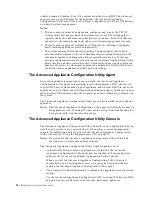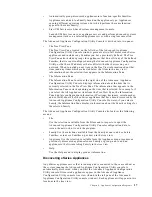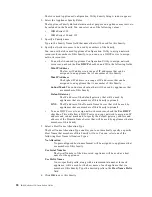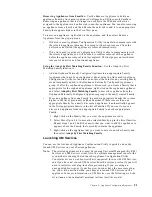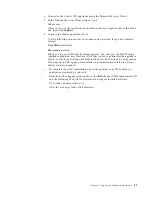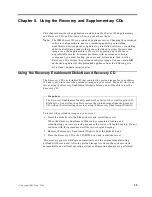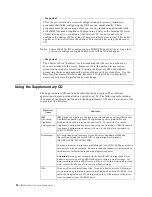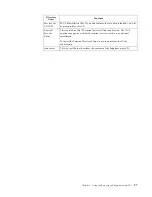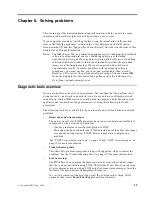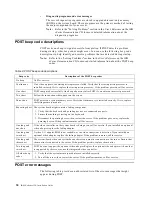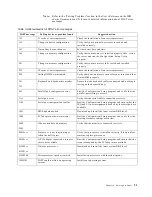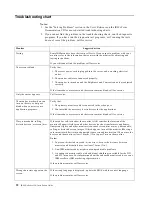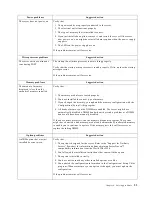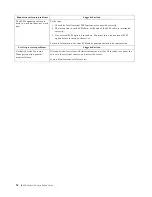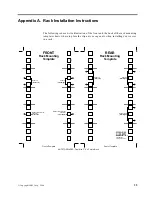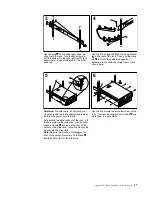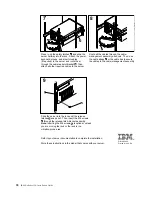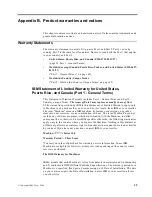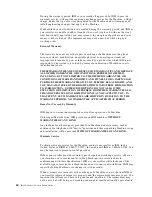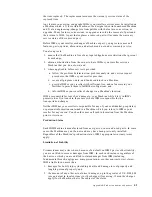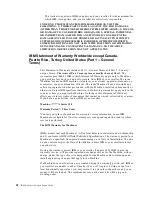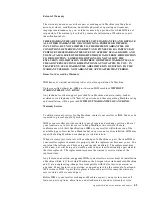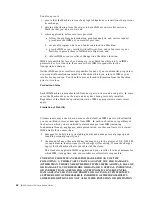
© Copyright IBM Corp. 2000
29
Chapter 6. Solving problems
This section provides basic troubleshooting information to help you resolve some
common problems that might occur while setting up your server.
If you cannot locate and correct the problem using the information in this section,
refer to the "Solving problems" section in the User’s Reference on the IBM xSeries
Documentation CD and the "Support for xSeries Servers" flowchart in the front of this
booklet for additional information.
Note:
The IBM xSeries 150 is a preloaded appliance server. Changing the preloaded
software configuration in any way, including applying or installing
unauthorized service packs or updates to preinstalled software, or installing
additional software products that are not included in either the preloaded
image or on the Supplementary CD is not supported and could cause
unpredictable results. To correct problems with a preloaded software
component, you must backup your user and system data; then, use the
Recovery CD to restore the preloaded software image. You can obtain IBM
authorized updates for this preloaded appliance from the following site:
http://www.ibm.com/eserver/xseries
Diagnostic tools overview
If you are unable to connect to your appliance, first confirm that the problem is not
being caused by a network connectivity issue. Once you have confirmed network
connectivity, contact IBM service or attach a monitor, mouse, and keyboard to your
appliance and troubleshoot the appliance server using the following tools and
procedures.
The following tools are available to help you identify and resolve hardware-related
problems:
•
Beep codes and error messages
The power-on self-test (POST) generates beep codes to indicate successful test
completion or the detection of a problem.
— One beep indicates successful completion of POST.
— More than one beep indicates that POST detected a problem. Error messages
also appear during startup if POST detects a hardware-configuration
problem.
See “POST beep code descriptions” on page 30 and “POST error messages” on
page 30 for more information.
•
Troubleshooting chart
This chart lists problem symptoms, along with suggested steps to correct the
problems. See the “Troubleshooting chart” on page 32 for more information.
•
Event/error logs
The POST Error Log contains the three most recent error codes and messages
that the system generated during POST. The System Event/Error Log contains
all error messages issued during POST and all system status messages from the
Netfinity Advanced System Management Processor.
To view the contents of the error logs, start the Configuration/Setup Utility
program; then, select Event/Error Logs from the main menu.
Summary of Contents for eServer 150 xSeries
Page 1: ...IBM IBM xSeries 150 Installation Guide...
Page 2: ......
Page 3: ...IBM IBM xSeries 150 Installation Guide...
Page 10: ...viii IBM xSeries 150 Installation Guide...
Page 12: ...x IBM xSeries 150 Installation Guide...
Page 16: ...4 IBM xSeries 150 Installation Guide...
Page 24: ...12 IBM xSeries 150 Installation Guide...
Page 36: ...24 IBM xSeries 150 Installation Guide...
Page 40: ...28 IBM xSeries 150 Installation Guide...
Page 74: ...62 IBM xSeries 150 Installation Guide...
Page 75: ......

